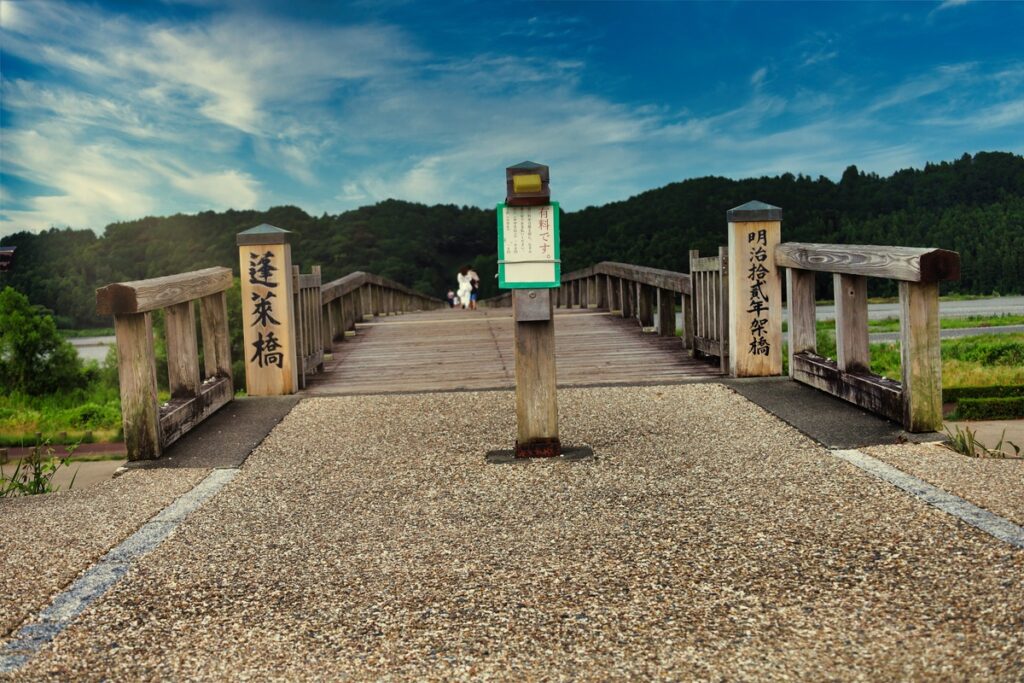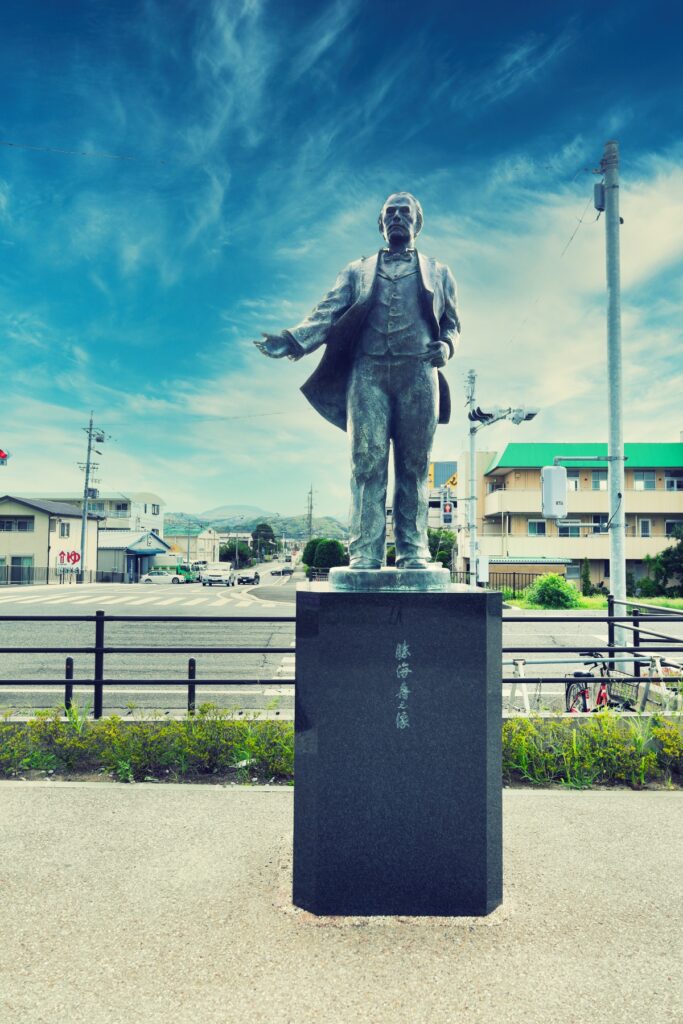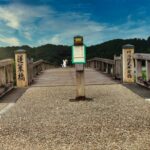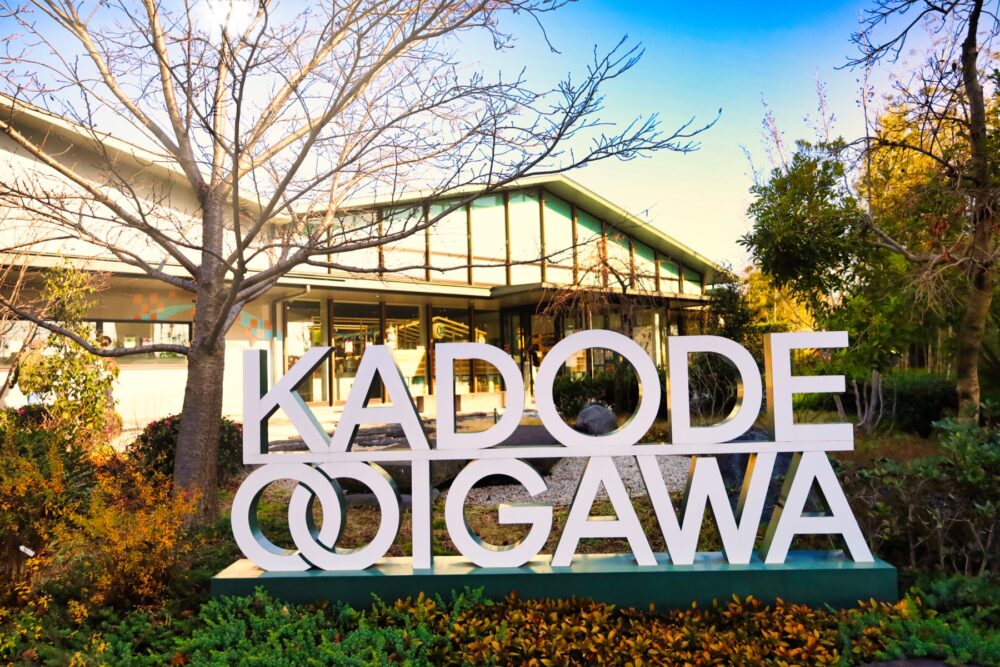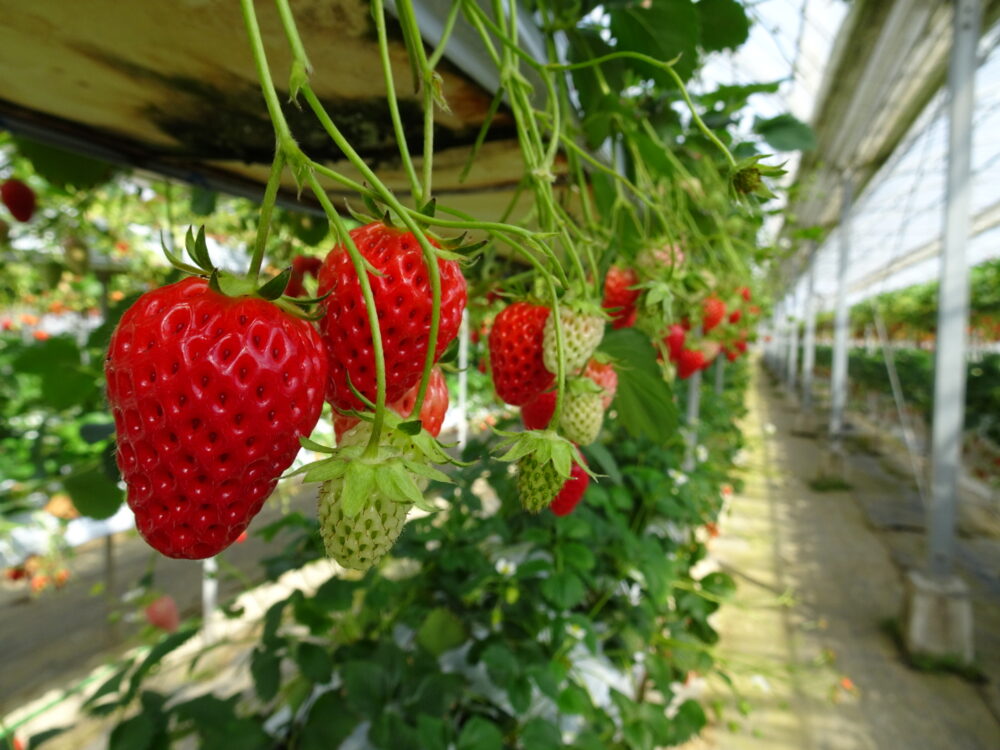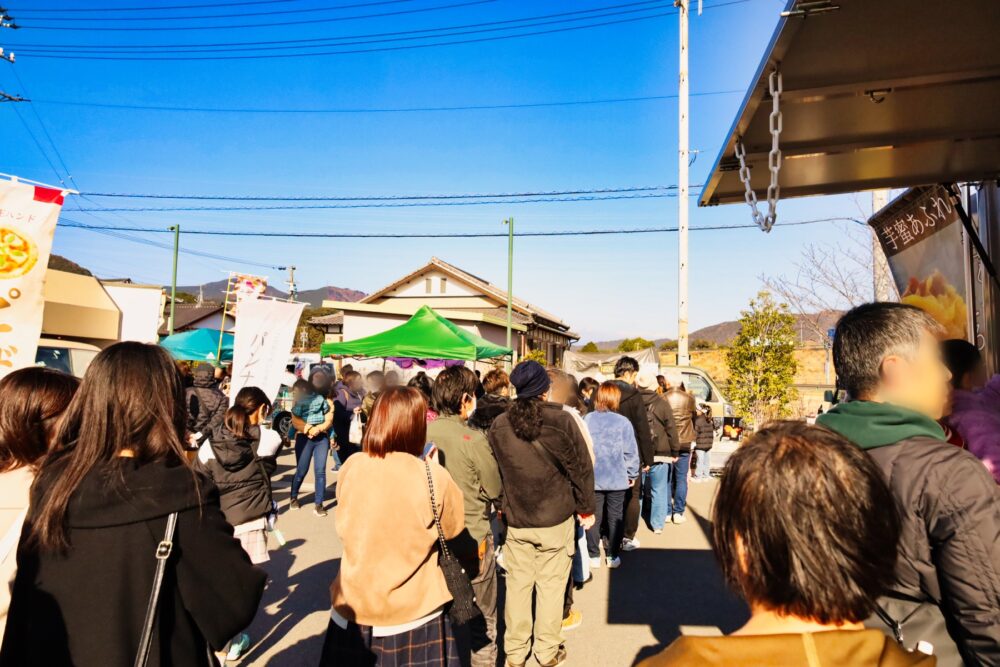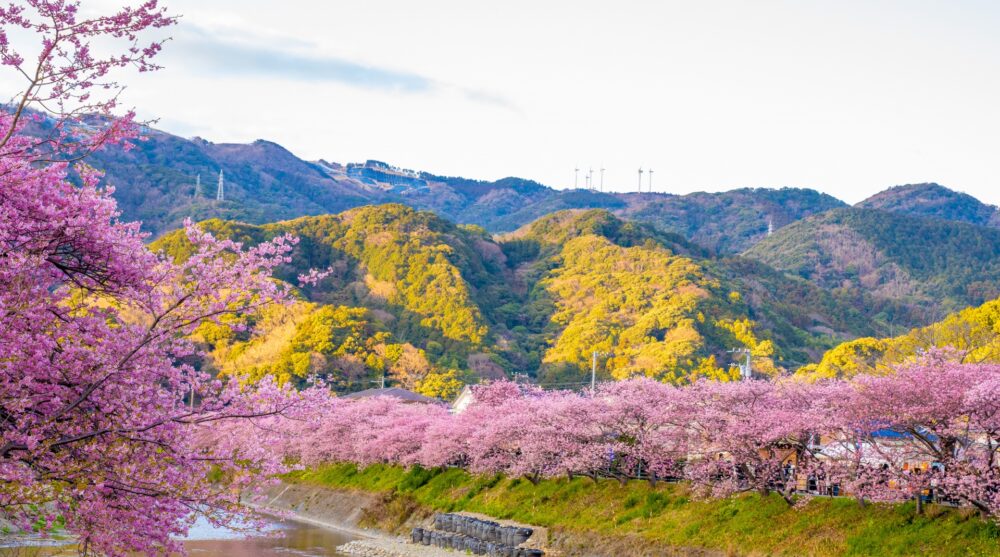Houraibashi, a wooden bridge located in Shimada City, Shizuoka Prefecture, attracts many visitors with its historical background and beautiful formations.
Yes, the reading of Horai-bashi bridge is (houraibashi).
This article introduces the Houraibashi Bridge, which was recognized by the Guinness Book of Records in 1997 as the "world's longest wooden pedestrian bridge.
Table of Contents
ToggleThe world's longest wooden pedestrian bridge
With a total length of 897.4 meters and a traffic width of 2.4 meters, Horai Bridge is the longest wooden bridge in Japan and was recognized by the Guinness Book of Records in 1997 as the "longest wooden pedestrian bridge in the world.
Its history dates back to 1879 (Meiji 12).
This bridge, which was created for the cultivation of the Makinohara Plateau, played an important role in avoiding dangerous boat trips across the Oi River in those days.
Its name comes from the fact that after local cultivating farmers petitioned the lord of the Shizuoka domain to build a bridge, when the bridge was completed, the domain lord praised the area as a "treasure mountain.
Today, the bridge still plays an important role as a farm road and attracts more than 100,000 tourists a year.
The word "yakunashi (no yaku)" or "long wooden bridge = bridge of long life," which is derived from its length of 897.4 m, has become a popular place for the repelling of bad luck and longevity.
After being certified as a Guinness World Record, Horai Bridge became an important local resource that attracts tourists.
More than just a passageway, this bridge, which symbolizes the history and culture of the region, exudes a unique charm and impresses visitors.
Access: Directions from JR Shimada Station
The route to Horai-bashi Bridge is about a 20-minute walk from JR Shimada Station, and the walk allows visitors to take their time to appreciate the surrounding scenery.
In addition, when using a car, it is conveniently accessible in 20 minutes from the New Tomei Shimada-Kanaya Interchange and in 15 minutes from the Tomei Yoshida Interchange.
By following the path leading to Horai Bridge, visitors will be able to experience the natural beauty and local culture of Shizuoka Prefecture.
Use of the Horai Bridge parking lot
Free parking spaces are available at Horai Bridge, so you can drive there safely.
Parking Lot 1 can accommodate 25 regular vehicles and 11 tourist buses, with space for larger tourist buses to park easily.
In addition, the second parking lot provides ample space for 50 standard-sized vehicles, allowing visitors in large groups to park smoothly.
The parking area around Horai Bridge is designed to provide comfortable access for all visitors, with parking spaces provided for the disabled.
Pedestrian and bicycle bridge crossing fees
When visiting Horai-bashi Bridge, the crossing fee is set at a wallet-friendly rate so that visitors can easily cross the bridge.
A flat fee of 100 yen is charged for adult pedestrians and bicyclists, and an even more economical fee of 10 yen is charged for children of elementary school age and younger, making the fee structure family-friendly.
For local residents and frequent users of the Horai-bashi bridge, a one-month commuter pass is offered for 800 yen.
This commuter pass has become a very convenient and economical option for locals, supporting their daily passage.
These rates are an important element in promoting the use of the Horai Bridge and the attractiveness of the bridge and its surrounding area to a wider audience.
The low-cost, accessible fee structure is key to making the bridge accessible not only to tourists, but also to local residents.
Opening and Closing Hours of the Horai Bridge and Notes
When visiting the Penglai Bridge, one should pay attention to its opening and closing times and how to pay the toll.
This bridge is available from 8:30 a.m. to 5:00 p.m., when the bridge guard is in the guardhouse.
When crossing the bridge during this time, you must pay the toll directly to the bridge keeper.
However, it is possible to cross the bridge at other times of the day, i.e., early in the morning or after 5:00 p.m., but in doing so, one must insert the toll fee into the toll box located in front of the bridge.
The system is designed for the convenience of visiting tourists as well as the efforts of local residents who support the maintenance of the bridge.
The hours of use and payment of fees for the Horai Bridge reflect the fact that this bridge is part of the local community and plays an important role for both local residents and visitors.
Every small contribution to preserving the beauty and history of the bridge is important for the next generation to inherit this special place.
Horai Bridge is a popular filming location for movies and dramas
With its historical charm and beautiful scenery, Horai Bridge is widely used as a filming location for movies and TV dramas.
The bridge has a timeless beauty and has appeared in a wide variety of video productions in genres ranging from period dramas to contemporary suspense and even variety shows.
Particularly memorable are the dramas "Tokoro-Keisatsu 4," the TBS drama "JIN-Jin," and the movie "Super High Speed! Sankyo Shudai" and other productions.
In these works, the quaint and emotional scenery of the Horai Bridge adds depth and a unique atmosphere to the stories.
The style of the bridge brings reality and aesthetic value to the scenes in the video work, making a strong impression on the viewers.
The Horai Bridge is chosen for filming movies and TV dramas not only because of the beauty of its scenery, but also because of the bridge's historical background and symbolic presence in Japanese culture.
Through its video productions, the bridge has shared its beauty and history with audiences around the world, and has also served to introduce the cultural attractions of the region to a wider audience.
Origin and Significance of the Horai Bridge Name
The name Horai Bridge has a very deep historical background in its origin and significance.
The name dates back to the Meiji Era, when Tokugawa Ietatsu, the head of the Tokugawa Soke family, compared the Makinohara Plateau to "Mount Horai," a mountain of treasure, to encourage his subjects of the time.
This metaphor has special meaning for the locals, as it celebrates the rich nature and history of the area.
The name "Horai" refers to a legendary island in Chinese mythology that is believed to contain a medicine for immortality, symbolizing eternal prosperity and happiness.
The praise of the area by the Tokugawa family represents the rich potential of the Makinohara Plateau and the surrounding area, as well as the efforts of the local residents.
This name has deeply influenced the identity of not only the Horai Bridge but also the surrounding area.
For local residents, the bridge is more than just a structure; it is a symbolic link to the rich nature, history, and culture of the region.
The name of Horai Bridge will be perpetuated in its beautiful scenery and history, along with the pride of the community.
Horai Bridge is a symbol of civil engineering in the Meiji era
The construction process of the Horai Bridge forms an important chapter in the development of Japan during the Meiji era.
Constructed in 1879, the bridge was built in response to the strong demand of tea plantation owners on the Makinohara Plateau.
At that time, local farmers needed to cross the Oi River to access the tea plantations on the other side of the river, and they used small boats to do so.
This situation required a great deal of time and effort for daily farming activities and was a major obstacle to efficient operations.
The construction of the Horai Bridge was a revolutionary solution to these problems.
Once the bridge was completed, local farmers could easily access tea plantations on the other side of the river, greatly streamlining the cultivation and transportation of tea.
The bridge contributed significantly to the development of the local agricultural economy and played a vital role in the development of the community.
The construction of the Horai Bridge is also a symbol of the progress of civil engineering and building technology during the Meiji era.
The bridge, built with the technology of the time and with the cooperation of local residents, influenced the subsequent development of civil engineering and architecture in Japan.
Along with its historical construction process, the Horai Bridge has special historical significance because of the important role it played in Japan's modernization process.
summary
More than just a historical structure, the Horai Bridge is a symbol of Shizuoka Prefecture's landscape and deeply rooted in the local culture.
Its beautiful structure has impressed many people throughout the ages.
In terms of cultural value, the museum has been featured in a wide variety of media, from period dramas to variety shows, and has played a role in conveying aspects of Japanese culture.
As for the future of the Horai Bridge, preservation and maintenance efforts are important.
Maintaining historic value while remaining safe and accessible is an important issue for the community.
Thanks to these efforts, the Horai Bridge will continue to be loved by many people.
Visit Horai Bridge in Shimada City during your sightseeing trip to Shizuoka Prefecture.

